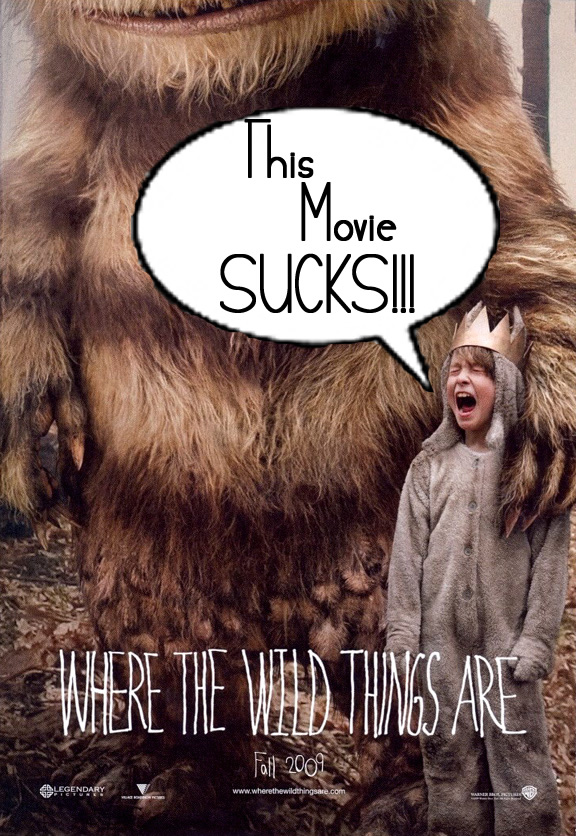
I am proud to bring you Dead End Follies' first official guest post (meaning a post I didn't copy pasted from somewhere else). Say hello to Anne R. Allen, author of romantic suspenses such as Food Of Love and The Best Revenge. Anne also writes a kick-ass eponymous blog that I found on Jane Friedman's Best Tweets For Writers Column. I strongly encourage you to visit her place by clicking here.
She's quite the thinker and offers very good writing advice. Today though, she's going to talk about a movie I reviewed a few months ago and will share with you a completely different opinion than mine. Force is to admit, she's kinda right! Don't hesitate to comment and visit her blog!
by Anne R. Allen
A friend and I watched the DVD of Where the Wild Things Are recently. We both adore the Sendak book and figured the Spike Jonz version could only be edgier and more fun.
But it wasn’t. We both fell asleep—in spite of the phenomenal effects, stellar cast, and faithful adherence to the spirit of the book.
Why? I think the filmmakers forgot several things that all writers need to keep in mind, whether writing for film/print or kids/adults.
Identify your audience and give them an idea of what to expect
No matter how much you like caviar, if you think you’re biting into blackberry jam, you’re not going to be happy.
The book’s audience is four-year-olds, but the film’s audience is intellectually sophisticated adults—people who watch esoteric Swedish films and adore Woody Allen.
But that’s not the way it was marketed. We don’t see toy stores filled with action figures of Annie Hall or skateboards decorated with scenes from The Seventh Seal.
I didn’t know until I looked it up that the screenplay of Wild Things was co-written by David Eggers—the Heartbreaking-Work-of-Staggering-Genius David Eggers. If I’d expected a McSweeney’s story instead of a kid’s movie, I probably would have liked this a whole lot better.
Make your protagonist sympathetic
What’s adorable and fun in Sendak’s original four-year-old Max seemed kind of creepy and unwell in a kid twice that age. A kid can be a brat, and your protagonist can be horrible, but it has to be brattiness the reader can relate to—and it has to be motivated by something we can believe might make us act horrible too. Otherwise it’s about as fun as watching somebody’s kid misbehave in the supermarket.
Don’t just talk about feelings—make the audience FEEL
The Sendak book was originally controversial because it was considered “too scary.” But there was nothing scary in the movie. Not even for four-year-olds. Except maybe the threat of falling asleep and suffocating in their popcorn.
Don’t peak too early
The most exciting thing was when Max first met the monsters at the end of the first act, but after he won them over, not much was at stake. Max became more of an observer than a participant, and he was hardly ever in danger.
Don’t have a muddle in the middle
In the second act, the monsters had relationship scuffles, artistic differences, and anger management issues—all charming and witty—but instead of each scene escalating the tension, the story ambled from episode to episode. The incidents related metaphorically to the first act, but were not set in motion by it—or by each other.
Tension has to build in order to have a compelling story. You can’t simply throw rocks at your protagonist; you need to throw bigger and bigger rocks. You have to be increasingly afraid for his welfare.
If your story confuses the audience, has an unsympathetic MC, or doesn’t subject him—and your reader—to escalating tension, there will be no Wild Things there.
